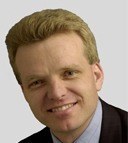The new financial year has begun, and with it, as with every financial year, comes a host of tax changes that will affect your super. Whether your fund is in the accumulation phase or the pension phase, the changes mean you might need to tweak your investment strategy. Here are some of the key things you should know about:
Contribution Caps: Most contribution caps are unchanged this financial year, with the key concessional contribution cap remaining at $25,000. However, if you’re over the age of 50, you’ll be able to access a higher concessional contribution limit of $50,000 at any stage during this financial year.
A new system, which hasn’t been fully designed, will be introduced from July 2012 onwards. This new system allows investors aged at least 50 with less than $500,000 of super assets to have an increased concessional contribution cap of $50,000. All other super investors will have a cap of $25,000.
The non-concessional contributions cap will remain at $150,000 in 2011/12 and therefore the three-year bring forward limit will remain at $450,000.
Small Business CGT Concession Cap: In 2011/12 the small business capital gains tax concession cap has been increased to $1.205 million from $1.155 million in the 2010/11 financial year.
Lump sum withdrawals: In the 2011/12 financial year, up to $165,000 of a your self managed super fund (SMSF) taxable component can be withdrawn as a tax-free lump sum if you are under 60. Previous lump sum withdrawals may be counted against this threshold. A similar threshold applies for some lump sums paid upon the termination of employment.
Minimum Pension Payments: Since 2008, the government has allowed you to elect to receive a smaller pension in response to stock market losses. For all pensions, this minimum income payment has been changed to 75% of the normal minima that apply, up from the 50% reduction that has applied for the last three financial years.
Remember that these minimums have to be based on the net market value of assets at the start of the financial year. (An adjustment rule applies if the pension commences during a financial year.)
Government Co-contribution: There has been no changes to the maximum government co-contribution of $1,000 or the cut out thresholds for the 2012 financial year. The maximum co-contribution will be reduced once your income exceeds $31,920, and it will cut out entirely for incomes above $61,920.
When calculating your income, make sure to include your assessable income (for income tax purposes), reportable employer fringes benefits and reportable employer super contributions. (These thresholds have applied from July 1, 2009 and the government has announced that these thresholds will continue to apply until June.)
Tax-free Redundancy and Approved Early Retirement Schemes: The limits for tax-free redundancy and approved early retirement schemes have been increased this financial year. You can now withdraw up to $8,435, plus $4,218 for each completed year of service, tax-free. This is compared with a limit of $8,126 plus $4,064 for each year of service in 2010/11.
Maximum Contribution Base for Compulsory Super: The wages limit on which employers pay the compulsory 9% super contribution has risen to $43,820 per quarter from $42,220. This means the maximum employer-paid super contribution for any quarter is now $3,943.80, up from $3,799.80 last fiscal year.
Assets Test Thresholds for Centrelink Aged Pension: In order to receive a full government pension, you’re assets must not exceed the new limits set out in the Assets Test. Each July 1, Centrelink adjusts the Assets Test thresholds for inflation. The new limits are as follows (assuming no other dependants):
Finally, you need to keep an eye on the government’s proposed carbon tax and associated compensation measures to see how it will affect you.
Important information: This content has been prepared without taking account of the objectives, financial situation or needs of any particular individual. It does not constitute formal advice. For this reason, any individual should, before acting, consider the appropriateness of the information, having regard to the individual’s objectives, financial situation and needs and, if necessary, seek appropriate professional advice.

